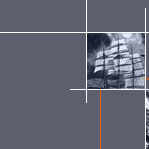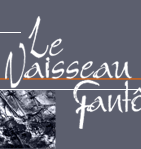|
The Moncton Transcript, Tuesday
October 14, 1969
2/2
Phantom Ship of Bay Chaleur
Area Sighted Again
By Ken Saunders
Staff Writer
(suite)
The flaming craft was grounded
near the mouth of the Restigouche River with all hands lost,
except for two boys, floating to shore in a barrel.
Others say the fire ship is the
ghost of a warship set afire by bursting shells during the
war of 1812.
But there are also other explanations
for those who don't believe, or don't want to admit they believe,
in ghosts. Of course none of the theories giving a more conventional
explanation of the phenomenon has been proven.
One New Brunswick scholar, Dr.
W. G. Ganong, expounded his ideas in Natural History and Physiography
of New Brunswick, published in 1907. He outlined his theory
in a series of five steps:
-A physical light is frequently seen over
the waters of Bay of Chaleur and vicinity.
-It occurs at all seasons, or at least in
winter as well as in summer.
-It usually precedes a storm.
-Its usual form is roughly hemispherical
with the flat side to the water, and at times it simply
grows without much change of form, but at other times it
rises into slender moving columns, giving rise to an appearance
capable of interpretation as the flaming rigging of a ship,
its vibrating and dancing movements increasing the illusion.
-Its origin is probably electrical and it
is very likely a phase of the phenomenon known as St. Elmo's
Fire.
Other scientist reject the St.
Elmo's Fire aspect of Dr. Ganong's theory. They point out
that St. Elmo's Fire, electricity slowly discharged from the
atmosphere to the earth, usually shows itself as a tip of
light on a pointed object, such as a church steeple or a mast.
It is also accompanied by a crackling noise.
Dr. Ganong's dissenters say,
however, that the Bay of Chaleur apparition is not attracted
by pointed objects, appearing only over expanses of water,
and it is silent. Others believe the Fire Ship to be inflammable
gas which may be released from an underwater seam that litters
Miscou Island's white beaches with lumps of bituminous coal.
But if this theory is accepted,
what ignites the gas? Why can it not be approached? Why does
it move away from chasing boats?
Oh yes, it has been chased. One
night, several years ago, it sailed past Lameque on Shippagan
Island. A group of fishermen decided to give pursuit, and
they did, all the way to the Quebec side of the bay. And they
never gained an inch.
Another idea is that the Fire
Ship is a form of phosphorescent sea life.
Biologists discount the theory
though because the Fire Ship has been seen in winter when
the bay waters are frozen.
A Pokemouche woman, Mrs. Marie
Allard, who lived to the age of 104, was an amateur photographer
in the tin type days. She often tried to photograph the ship
but never succeeded. Neither has anyone else.
Mrs. Allard called the apparition
the bad weather light and said it did not have the shape of
a ship. She said it was a light which rose from the water
before a gale. Her son also felt it to be a weather light
and added, it is simply a ball of fire "that our scientists
will explain some day."
Scientists, nor anyone else,
have explained it yet, but people keep on seeing it.
"I saw the Fire Ship twice"
says a Bathurst area farmer. "It looked exactly like
a three-master, full-rigged vessel with sails ablazing. There
were tiny things squirming up through the flames -black things
like men climbing the rigging."
In 1937, the phantom dropped
southward to pay a visit to the Northumberland Strait.
Said a Tracadie man, who saw
it, "I could see the rigging burning and men hurrying
around the deck as though fighting the flames. Some were climbing
the masts and some were in the shrouds. They were apparently
living men, but of course it was an illusion."
Another man, a Shippagan veered
off its course and Island fisherman, claims the Phantom Ship
nearly lured him to his death.
On that occasion, the phantom
was a small fishing vessel and was not burning.
"I was out fishing fall
herring," the fisherman later related. "A thick
fog blew in and I started for port. There was a boat ahead
of me so I decided to follow it ashore. Suddenly I realized
I was almost on top of a treacherous reef.
"I also realized that if
the boat I was following was a real boat I couldn't possibly
see it - not through a peasoup fog. Yet I could see it plainly.
It was the Fire Ship, nothing else."
A Perth resident saw it during
1958 at Salmon Beach. She was awakened early one morning.
"I thought it was the reflection of a fire at first"
she remembers.
"But then l realized it
was on the water and the flames were rising from the outline
of a ship." She said it faded in the lights of a passing
car.
Another woman, who saw it early
the same year, described the flames as flaring up and then
dying down repeatedly in something like drill precision. It
also appeared to her as a ship with its sails ablaze.
Her next door neighbour, who
had seen the apparition on earlier occasion, said. "It
seemed to be riding the water, but not going anywhere... I
do not believe in ghost ships, but don't ask me what it was.
I don't know.
Nearly four years ago the Phantom
Ship veered a long way off its usual stamping grounds, showing
up near New Glasgow, N.S.
A family, driving in the region
of Jock's Hill on the Pictou Landing Road, described the apparition
as "a ball of fire on the waters of the Northumberland
Strait."
"I've neer seen anything
like it before," said the father, "I checked the
position of the light and found it was about 10 miles out,
close to the water and to the right of Pictou lsland.
"It was definiteIy not a
lighthouse. The light we saw was in the shape of a half-moon
and was a dark red glow."
Ghost ships are not unusual.
Folklorist Helen Creighton, in her book Bluenose Ghosts, tells
of many, particularly around Nova Scotia. One is quite similar
to the Bay Chaleur phantom and appears in the Mahone Bay area.
Miss Creighton writes, "Most
phantom ships are presumed to be connected, with buried treasure."
Just possibly then, a treasure
may lay hidden in the Bay of Chaleur region, and the Phantom
Ship appears periodically to check on it.
But, no matter whether the phantom
is natural or supernatural, it is a thorough interesting subject,
and as Dr. Ganong has written, "It is plain that in this
phenomenon we have a subject which invites accurate investigation."
 Retour
au début de l'article Retour
au début de l'article

|






